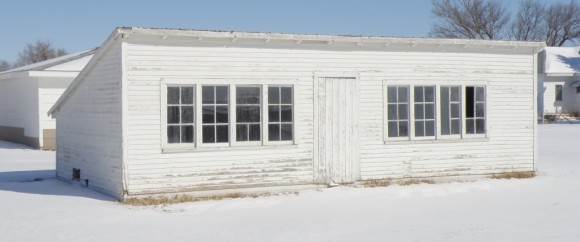Chicken coops:
Eggs were an important source of additional farm income for farmers throughout the first half of the twentieth century. Chicken coops generally featured shed roofs and a long band of windows to allow light into the interior.
Dairy:
Dairy cows were another important source of additional farm income for farmers, with cream sold to local creameries. Since dairy cows were generally just a supplemental source of income (as well as a source of milk for the family) most farmers had only a handful of cows and milking was done in a general purpose barn. The presence of stanchions in a barn indicates that it was used for dairy cows. Farmers with more cows might have a barn primarily devoted to them such as the one on the Crowder Farm (5PL.147) or the milk house on 5PL.316.
Hog barns:
The primary function of a hog barn was to provide protection from the cold, thus a wide range of farm buildings or general barns could be adapted for use by hogs, especially for farmers keeping a small number of hogs. For those focused on pure breed or larger scale hog production, there were specialized hog barns featuring sky lights to allow light into the interior of the barn and small doors at the base of the walls to allow hogs to move between indoor and outdoor pens.
Corrals:
Around the mid-twentieth century many farmers added feedlots for beef cattle to their farmstead complexes. Corral areas are usually located to the rear or side of the farm complex. In addition to the corrals, other associated features include loading chutes, cattle feeders, and cattle squeeze chutes.




